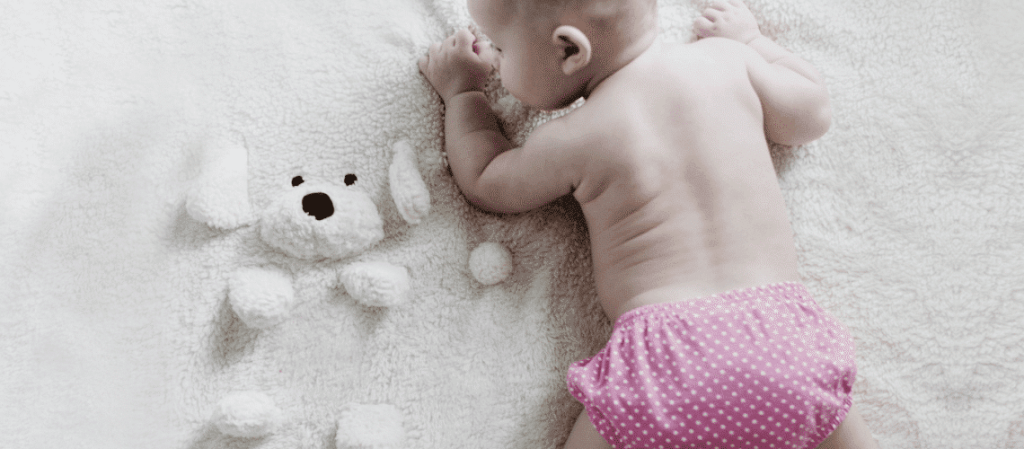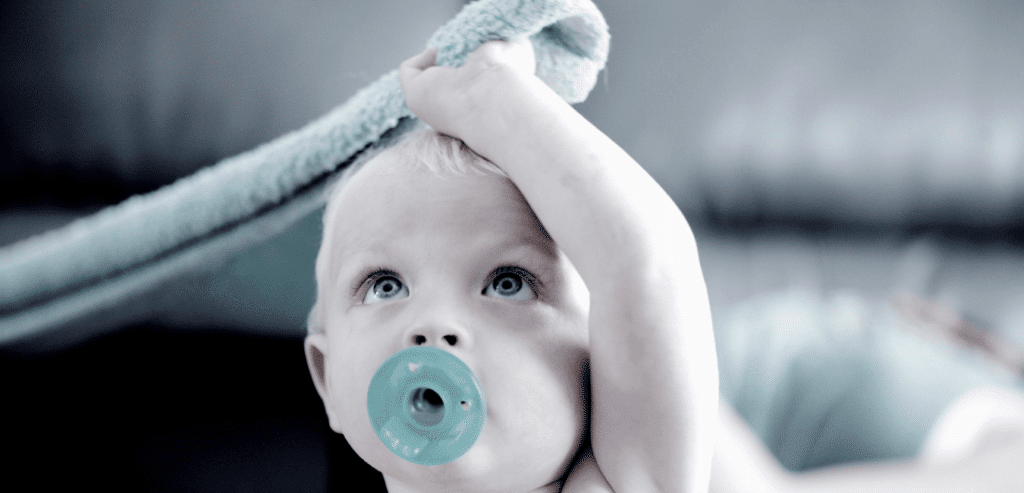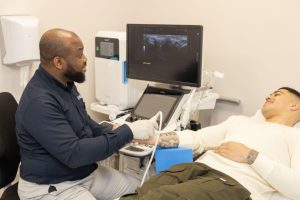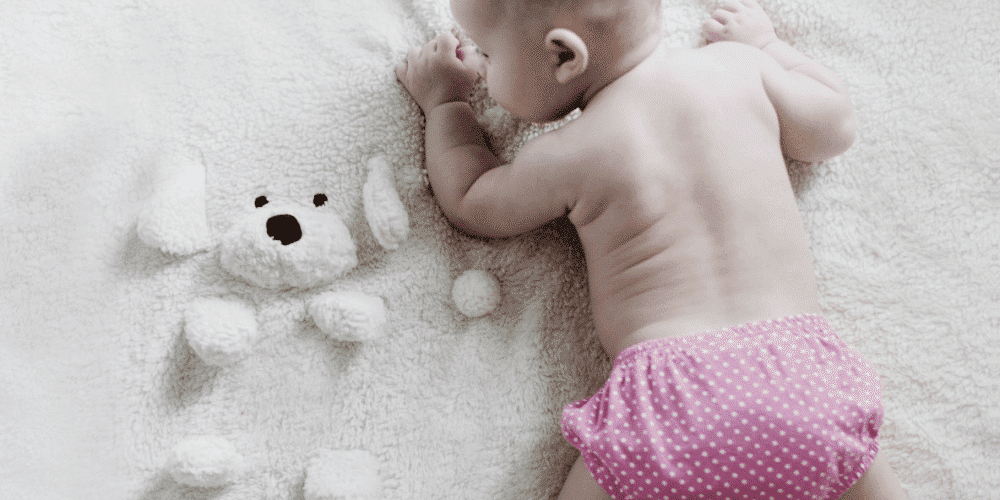Sleep safety is a scary topic for new parents because it can feel like the “rules” are difficult to pin down. You may have family members who make comments like “don’t worry, sure I slept in a drawer when I was a baby and I’m fine!”. Usually people are just trying to offer reassurance, however, you are the parent and you decide what is right for your little one.
Nowadays we have plenty of research and easier access to information to help us to make more informed decisions about sleep safety. In the last 20 years, the number of babies lost to Sudden Infant Death Syndrome (SIDS) has decreased by 76% in Ireland. Doctors are still not sure exactly what causes these tragic unexpected deaths, however, research is ongoing to identify more risk factors so the medical community can be more proactive in preventing SIDS or “cot death”. We do know that your baby is considered “higher risk” if they are less than 3 months old, was born before 37 weeks or had a low birth weight (under 5.5 pounds). Since knowledge is power, we’re going to explore the ways you can lower your baby’s risk.
Sleeping Position
Place your baby on their back to sleep, whether it’s nighttime or nap time. Their feet should be at the foot of the cot to prevent them from shuffling downwards and possibly covering their face.
Sleeping on their back also protects your baby from choking on vomit. The vomit comes up through the oesophagus, which is located behind your windpipe. When your baby is asleep on their back, the vomit will not be able to reach their windpipe due to gravity.
If your baby spent time in the Neonatal Unit in the hospital, they may have occasionally been placed on their front to sleep. This can be recommended by doctors for medical reasons while babies are under constant supervision in NICU. Never place your baby on their front to sleep unless specifically advised by a doctor.
If you’re concerned about your baby developing a flat head, also known as plagiocephaly, just gently turn your baby’s head to the side while they sleep. Tummy Time also helps to prevent flat head syndrome by strengthening the muscles around the neck and reducing the amount of time your baby spends lying down.

Napping in Car Seats
It is not safe for a baby to sleep in a sitting position. Therefore, babies should not nap in their car seat, their buggy or on a couch. It’s okay for babies to sleep in a car seat or buggy for a short period of time, but they should be moved to a cot as soon as possible. Car seats are only safe to sleep in when they are positioned properly in the car. If a car seat is placed on a flat surface like the floor or a table, your baby’s position becomes slumped, restricting their airways.
The Cot
Your baby’s cot should be clear. This means no pillows or duvets, no teddies or toys, no cot bumpers, no loose sheets and no products like foam wedges intended to reduce reflux. Anything in your baby’s cot poses a risk of suffocation. Your baby should not have a blanket in their cot until they are at least 12 months old. Baby sleep bags are recommended for all babies under 12 months. If your baby cannot settle without a blanket, use a cellular blanket which allows air to circulate through it. Once they are asleep remove the blanket from the cot.
The cot itself should be correctly assembled and in perfect condition. The mattress should be clean, firm, flat and should fit properly into the cot. Avoid memory foam mattresses as you do not want your baby sinking into the mattress whatsoever. Only use tightly fitted sheets on your baby’s mattress. If you can fit 2 fingers between the mattress and the cot, then it does not fit correctly. The harder it is for you to change the fitted sheet – the safer it is for your baby!
Take extra care when using an old crib, it’s not recommended to use a crib which is more than 10 years old because safety standards have changed so much. Old cribs may have lead paint, splintered wood, peeling paint, rough areas, or slats which are too far apart. The distance between the slats on your baby’s crib should be no wider than 6 centimetres.
Sleep Environment
Your baby getting too hot can increase their risk of SIDS. The ideal room temperature is 16-20 degrees Celsius. You can monitor the temperature in the room using a room thermometer. Position your baby’s cot away from any windows, radiators or heaters. Use blinds during the day to limit the amount of sun beaming into your baby’s room while they nap.
Don’t overdress your baby for bed. As parents, you may feel the urge to tuck them in and make them cosy, but all they need is a nappy, vest and babygrow, then a sleeveless baby sleep bag. In the summer, ditch the babygrow and use a lower tog sleep bag. Never allow your baby to sleep with a hat on, as this can cause them to overheat and can move over their face and cause breathing difficulty.
Co-Sleeping
The safest place for your baby is in your room, but not in your bed. Even if you’re a light sleeper, or just dozing off for a few minutes, it’s a big risk to sleep with your baby in your bed with you, especially before 6 months old.
Avoid breastfeeding in bed, try having a chair in your room which you sit in while breastfeeding during the night. If you have no room for a chair, sit at the foot of the bed to reduce the likelihood that you’ll fall asleep.
Never fall asleep holding your baby, especially if they are lying on their tummy on your chest. This is one of the most common causes of SIDS and increases your baby’s risk by 50 times. The baby’s airways are restricted by being so close to you and in an unfavourable sleeping position (on their tummy or in your arms). There’s a strong possibility that they may struggle to breathe, overheat from your body heat or be dropped if you fall into a deep sleep.
Smoke-Free Zone
Babies being exposed to cigarette smoke, whether before or after birth, greatly increases their risk of SIDS. The more smokers in your house, the higher your baby’s risk. Don’t be shy about asking people to stay away from you while smoking, or after smoking. Your baby is your priority and people should respect your wishes to keep cigarette smoke as far away from your baby as possible. If you or your partner smokes, do not co-sleep with your baby. Thirdhand smoke is dangerous for babies, so it is recommended that nobody smokes indoors, even when the baby is not there.
Try a Soother
Some studies have shown soothers (dummies, dodies, pacifiers, whatever you choose to call them) can reduce your baby’s risk of SIDS. Experts suggest that a soother, combined with proper sleep position helps your baby’s airways stay open and their breathing is more regular. Only use a soother if your baby is receptive to it, trying to force it may just cause them stress. If you are breastfeeding, never introduce a soother until your baby’s latch is well-established. If you use any clips, ribbons or accessories on your child’s soother always remove these before putting your baby to sleep, they pose a risk for choking and may become wrapped around your baby’s limbs or neck.

Breastfeeding
Breastfeeding for 2-4 months reduces the risk of SIDS by 40% and breastfeeding from 4-6months reduces risk by 60%. Partial breastfeeding (using formula for some feeds, breastmilk for others) carries benefits too, however, the risk is lowest in exclusively breastfed babies. Studies have shown that breastfed babies can wake up easier (this sounds like a negative, but stay with me) so if they were to have difficulty breathing they are more likely to wake up and cry. Formula-fed babies sleep much deeper because their food is harder to digest, keeping them fuller for longer. Kinda like when you fall asleep on the couch after Christmas dinner.
If you’re struggling with breastfeeding, inform your healthcare provider so you can explore your options.
Sleep Products
Always be suspicious of products which claim to reduce the risk of SIDS. The only things in the baby shop which can actually reduce risks are properly fitting firm mattresses, soothers, sleep bags and a cot or Moses basket which fits in your bedroom.
Foam wedges, cot bumpers and special round pillows to prevent flat head syndrome are not safe and should not be used in your baby’s cot.
Baby monitors can be helpful. Some have features which alert you if your baby hasn’t taken a breath in a number of seconds. These are a great help and may give you some peace of mind, however, they are not a replacement for your own consistency. Continue to check on your baby regularly, devices are clever, but not perfect.
Bedside Sleepers are gaining a lot of popularity in recent years, but there is less research and data about the safety of these cots which attach to the side of your own bed. There are concerns that the duvet from your bed may limit airflow through the baby’s area, or an ill-fitted cot may have gaps that can entrap the baby’s limbs or head between the cot and your bed. However, doctors say they are a positive alternative to having your baby in your bed with you.
Others who care for your baby
About 20% of infant deaths occur while the baby is in the care of someone other than a parent, like a minder, a creche or other family members. This can be due to the carer not being as informed or as diligent as a parent. When considering a new minder or creche, always ask them about their sleep safety policies to make sure they follow all of the procedures you need. If a family member is looking after your baby, even if it’s only for a short time, make sure they’re clear on your baby’s sleep safety routine. You may feel like you’re being controlling, but you’re protecting the caregiver’s best interest, too. The person who is looking after your baby should care enough to take the extra steps to protect them. If your child’s carer is not receptive to following sleep safety guidelines, then this is a red flag.
Conclusion
Many of the guidelines could be seen as strict or judgemental. However, these guidelines come from years of research into the prevention of SIDS. The way we look after babies now is very different from how our parents looked after us. With each generation, our instances of SIDS will continue to decline due to the availability of information. Don’t be afraid to share information and let another parent know if you notice them doing something potentially harmful. Always do your own research so you can be confident you’re doing everything you can to protect your little one.







